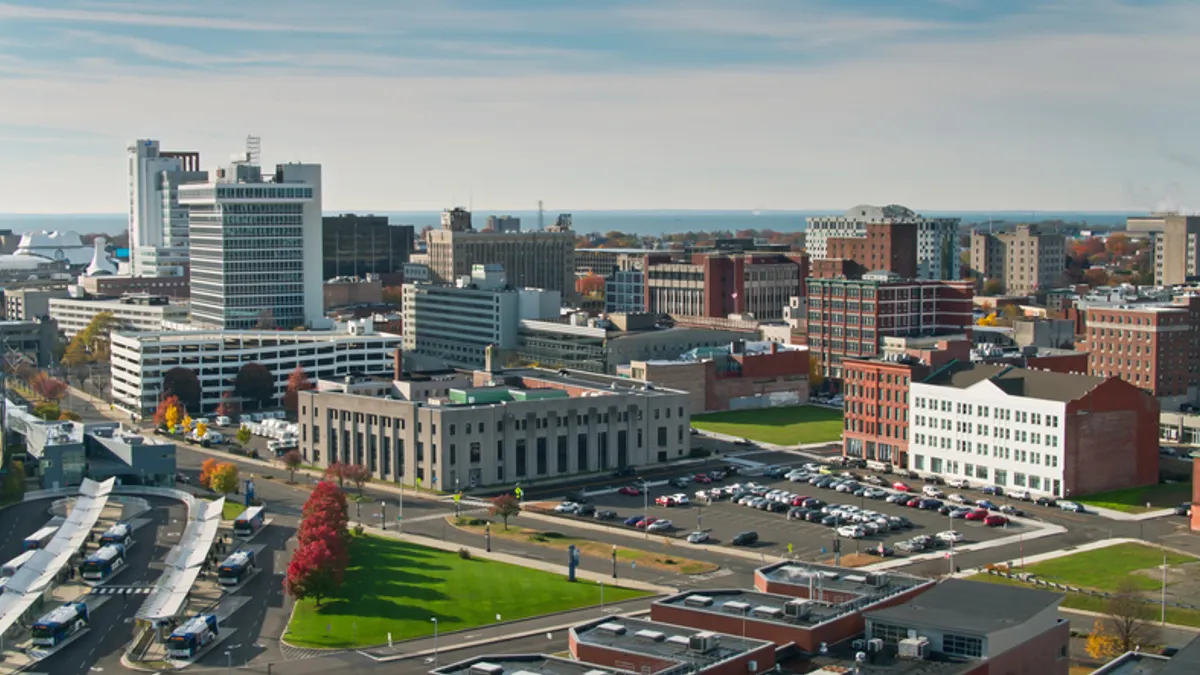A region’s current economy often serves as a good predictor of where it can grow in the future, says Greg Wright, who co-leads the Workforce of the Future initiative with The Brookings Institution.
But not enough cities use their current strengths as building blocks to welcome and grow newer, advanced industries such as renewable energy or biotechnology. Wright recently co-created the Smart Growth Cities tool to help them identify new opportunities and better link economic and workforce development.
Nashville, Tennessee, for instance, is considered one of the most booming U.S. metro areas for economic growth and has leveraged its universities’ human capital and its legacy of music performance and creation, Wright said.
Phoenix is another area building on its strengths, including its access to expertise through colleges and universities such as Arizona State University and its existing semiconductor companies. Both helped attract investment from Taiwan Semiconductor Manufacturing Company, said Mayor Kate Gallego.
In 2020, TSMC announced it would invest about $12 billion to build and operate an advanced semiconductor facility in the Phoenix area. The investment aims to create more than 1,600 high-tech professional jobs directly, along with thousands of indirect jobs in the semiconductor ecosystem.
“Look at existing strengths and try to build on them,” she advised.
The Smart Growth Cities tool
Brookings’ Smart Growth Cities tool aims to identify the economic development strategies that best leverage an area’s underlying capabilities and provides an interactive guide for economic and workforce planning at the U.S. Metropolitan Statistical Area and Economic Development District levels. There are 384 metropolitan areas and 393 economic development districts, and Brookings plans to update the tool as new U.S. Census data becomes available.
Some industries that don’t currently operate in a certain area may still offer opportunities for economic growth if they take advantage of attributes that already exist within the region. For instance, an agricultural area may pursue beverage manufacturing as a next step. And while beverage manufacturing isn’t overly sophisticated, it could be a stepping stone to advanced manufacturing, Wright said. He added that pursuing a similar trajectory will be essential to many cities’ economic health, as technology will drive most future growth industries.
The tool can generate a report for each metro area or economic development district that identifies underdeveloped industries that produce quality jobs, which Brookings defines as those that pay above the national median wage and offer employer-provided healthcare.
For instance, the tool identified several potential opportunities for industry in the Kansas City metro area: software publishers, professional and commercial equipment supplies, merchant wholesalers, business schools and computer and management training. Wright said these industries are similar to those already within Kansas City but in different sectors.
The tool can also help city leaders identify the workforce requirements needed for a particular industry. City leaders can then work with colleges, community colleges and other educational institutions to direct programs to these areas, Wright said. “One point of the tool is to link economic development with workforce development,” he added.
To be sure, fostering economic development in distressed, sometimes isolated areas can be challenging. “While an area may attract one or two firms, this may not generate enough agglomeration spillovers to launch further growth,” Wright said.
Areas struggling to provide basic services like decent roads may need a higher tier of government to pump money into them, said Frank Zerunyan, professor of the practice of governance at the University of Southern California’s public policy school. “It’s like poverty, a vicious cycle and hard to get out of,” Zerunyan said. Federal economic development funds could provide outside support for local governments, he said.
Wright said Brookings’ tool could identify “escape valves” to help a city or region develop its economy. “It’s not easy, as there are usually one or two ways to move,” he said. For example, rural areas in particularly scenic regions may look to tourism to boost their economies. Leaders in agricultural centers may consider agriculture construction.
The tool has enjoyed “a great reception from cities” as well as economic development districts, Wright said. He also noted that he and his team are working with several partner cities and are targeting economic development districts for more one-on-one training and outreach as well.




















